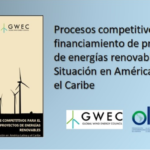
Nearly all of Hawaii’s utility-scale battery storage capacity is installed with onshore wind turbines or solar photovoltaic (PV) systems, allowing excess electricity from those generators to be stored and used later. As of January 2020, about 30% of Hawaii’s total generating capacity is solar or wind. The non-dispatchable nature of these technologies creates operational challenges for system operators. Pairing batteries with wind and solar systems has proven effective in mitigating the operational challenges. Hawaii plans to generate 100% of its electricity from renewable energy by 2045, and given this goal, wind and solar likely will account for a growing part of the state’s energy mix in the future. EIA expects that additional battery installations will support this growth.
The most commonly reported application of Hawaii’s battery systems is the storage of excess wind and solar generation. Without storage, wind and solar generators can only provide energy when the sun is out or the wind is blowing. At times with little or no sun or wind, electricity generation from sources such as petroleum and coal are used to meet electricity demand. By storing excess output from wind and solar power plants, batteries can provide electricity during times of low wind and solar output and reduce the need for other forms of generation.

The U.S. Energy Information Administration’s (EIA) Preliminary Monthly Generator Report provides data on the available capacity for each application of battery storage. Unlike most electricity generators, which can be characterized by their power capacity alone, batteries are characterized by two metrics: power capacity and energy capacity. Power capacity is the maximum instantaneous amount of power that can be produced on a continuous basis. Energy capacity is the total amount of energy that can be stored or discharged by the battery.
Beyond electricity storage, Hawaii’s battery storage is also used for peak shaving, frequency regulation, reducing curtailments, and ramping/spinning reserves. Peak shaving—when storage systems are used to reduce peaks in system demand—is the second most common application of Hawaii’s battery storage systems. Shifting portions of electricity demand from peak hours to other times of day also reduces the need for higher-cost, seldom-used generation capacity to be online, which can result in overall lower wholesale electricity prices.

Although stand-alone wind and solar PV systems are spread across the state, wind and solar generators with battery capacity are concentrated on two of the state’s islands. All of the solar PV generators with battery storage are located in Kauai, and all of the onshore wind turbines with battery storage are on Maui. The only utility-scale energy storage battery capacity not located with a wind or solar system is on Molokai.
Hawaii plans to continue building renewable and battery storage capacity; operators have reported plans to EIA to add an additional 45 megawatts (MW) of solar with battery capacity to the grid by 2022. These new solar and storage systems will be located on Maui (15 MW of solar PV and 15 MW of battery storage) and Hawaii Island (30 MW of solar PV and 30 MW of battery storage). In addition to these systems, the Hawaiian Electric Company, the largest supplier of electricity in the state, has released requests for proposals (RFPs) seeking 900 MW of renewable energy and energy storage projects, including 594 MW of solar on Oahu, 135 MW on Maui, and 203 MW on Hawaii Island. Both Maui and Hawaii Island have mandatory energy storage requirements for new solar projects.
Principal contributor: Kien Chau
Autor
-

La Organización Latinoamericana de Energía (OLADE) es un organismo de cooperación, coordinación y asesoría técnica, de carácter público intergubernamental, constituido el 2 de noviembre de 1973 mediante la suscripción del Convenio de Lima, ratificado por 27 países de América Latina y El Caribe, con el objetivo fundamental de fomentar la integración, conservación, racional aprovechamiento, comercialización y defensa de los recursos energéticos de la Región.
Ver todas las entradas


